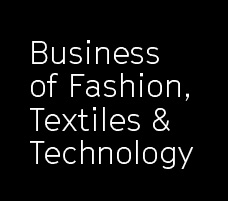22 August 2019
Talks on Sustainability
The use of sustainable materials and process by makers, designers and service providers is on the rise. As part of our support programme to small and medium enterprises (SMEs) in the fashion, textiles and technology sectors, on 21 August, we held a series of talks on how SMEs could further implement sustainability throughout their businesses.
According to Gabrielle Miller of the Centre for Sustainable Fashion, UAL, four scenarios are likely to develop over the next decade and affect the making and consumption in fashion industry. They are,
- Living with less draws on the aftermath of 2020s where huge climate shocks will affect people across the world and food shortages will be the cause of rise in number of deaths. Our resources will be limited and sourced locally; clothing will be treasured and kept for a long time or passed into families as an heirloom. In this scenario, the brands will work to a product and service model.
- Hyper Hype would see the technology improvement and application of Artificial Intelligence (AI) throughout the 2020s. This scenario will leave a huge number of people on a small universal basic income (UBI). The world will become very high-tech efficient, which would shift a large chunk of production from the land to the lab, fashion will become digital and a segment of the industry will create solely for digital interaction in fashion.
- In Safety Race populist parties will be on increase. Global recessions, climate changes and inequalities would give a rise to people forming their own groups, outside of government structures. Fashion will be recognised by its origins, the specialist making techniques where textiles and silhouettes will portray a message of status and distinction.
- Chaos Embrace would bring a new social order after the events of 2020s. There will be an opportunity and demand to share resources and knowledge in order to create self-efficient systems and resilience. Fashion would be designed to be useful and practical. As there will be a shortage of raw materials, most of the fashion and textiles would be sourced locally or remade.
These four scenarios introduced how sustainability will become a norm in the fashion, textile and technology sector by 2030. In this talk, representatives from SMEs shared their experiences around four scenarios and how these are already starting to take effect in their workshops and business models.
Our second speaker of the talks was Shaun Beaney of the Institute of Chartered Accountants in England and Wales (ICAEW). Shaun discussed his experience of working with creative industries and how to develop a business plan that the investors are looking for. He highlighted how sustainability can become a great investment opportunity for investors as a demand to sustainability is becoming a norm by consumers.
Shaun suggested that a business plan should search for resources and sectors with future possibilities. As the government, banks and private investors are looking to invest in the creative industries, sustainability could play a key role in a business plan. Sustainability could focus on the financial returns on investment, training and skills transfers, social impact such as diversity, employability and anything that could have an environmental, social and governance impact with a positive purpose behind it.
The third speaker, Dr. Kate Goldsworthy, co-director of the Centre for Circular Design at the University of the Arts London, highlighted the recent trends and material developments in circular economy; her talk introduced some of the opportunities and challenges of circular design within the fashion sector.
Kate discussed how the economy is moving towards sustainable options and looking for ways to re-invent or re-use materials and processes which were not possible before. She shared some of the projects that the Centre for Circular Design had recently undertaken within the industry such as the development of TED’s Ten cards for the fashion, textile and design industry. The TED cards are a source of inspiration to cut down on waste, use efficient materials and design for recyclability.
Kate also presented how she had been involved in Trash 2 Cash project where research developed systems and processes of creating new fibres from pre-consumer and post-consumer waste. Kate’s expertise lies in bridging creative and scientific disciplines, within commercial contexts, translating scientific insights into tangible tools for design. Kate is leading Challenge 5 (Synthetic and oil based materials Research and Development) of the Business of Fashion, Textiles and Technology Partnership.

